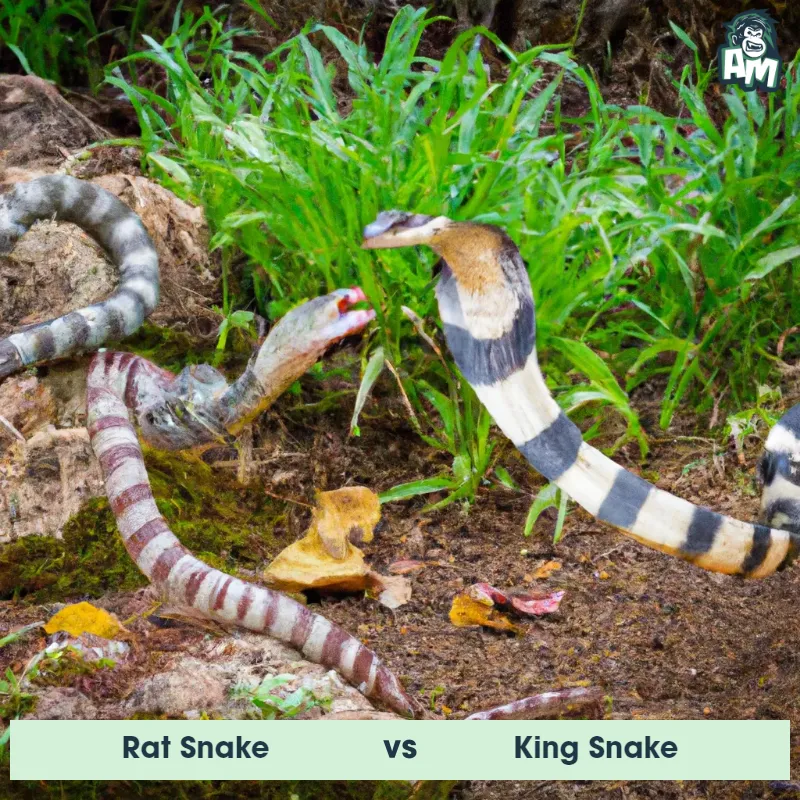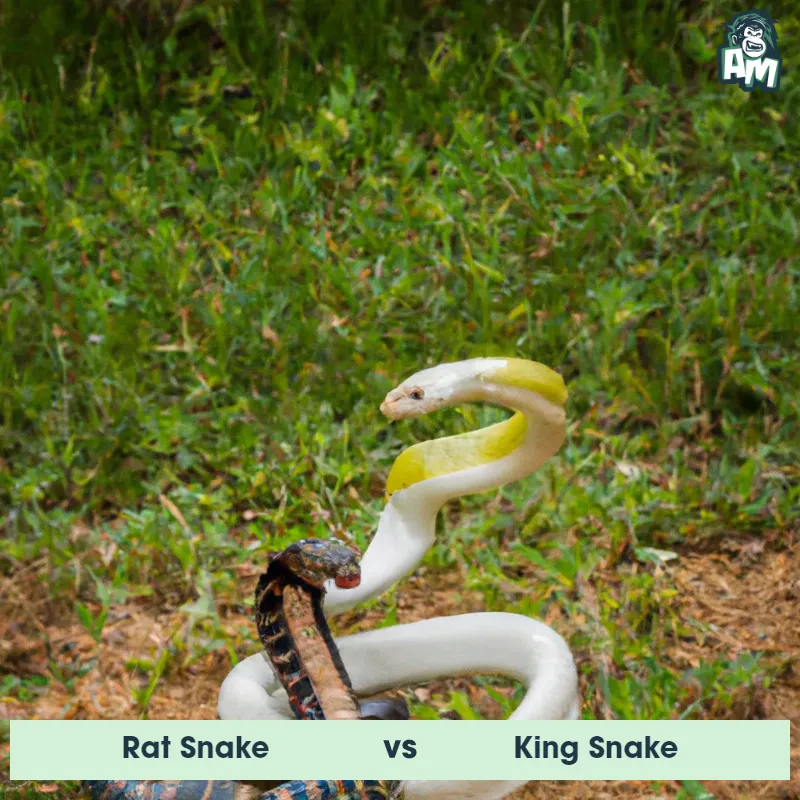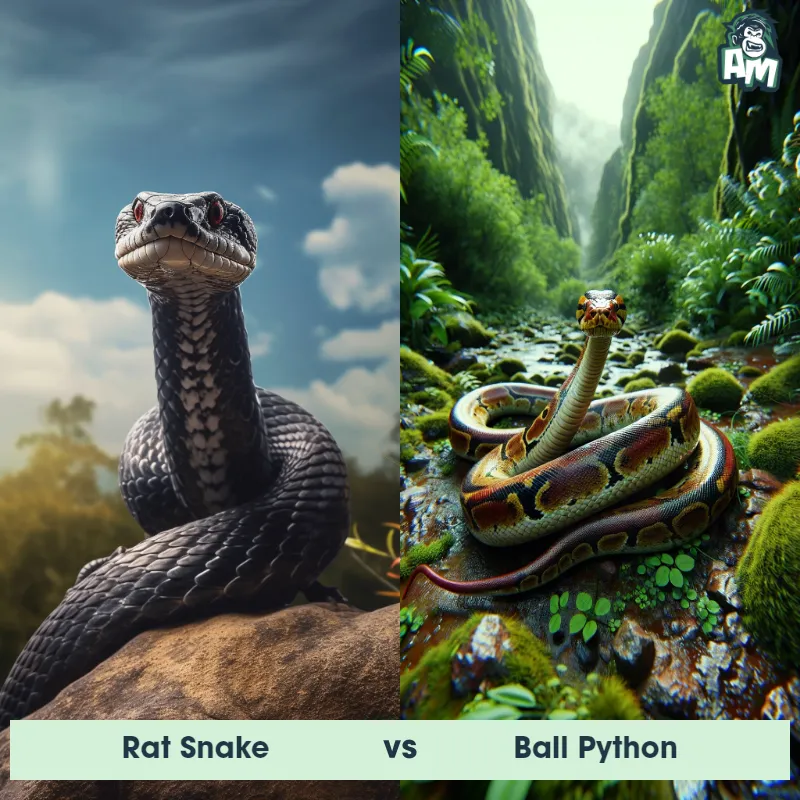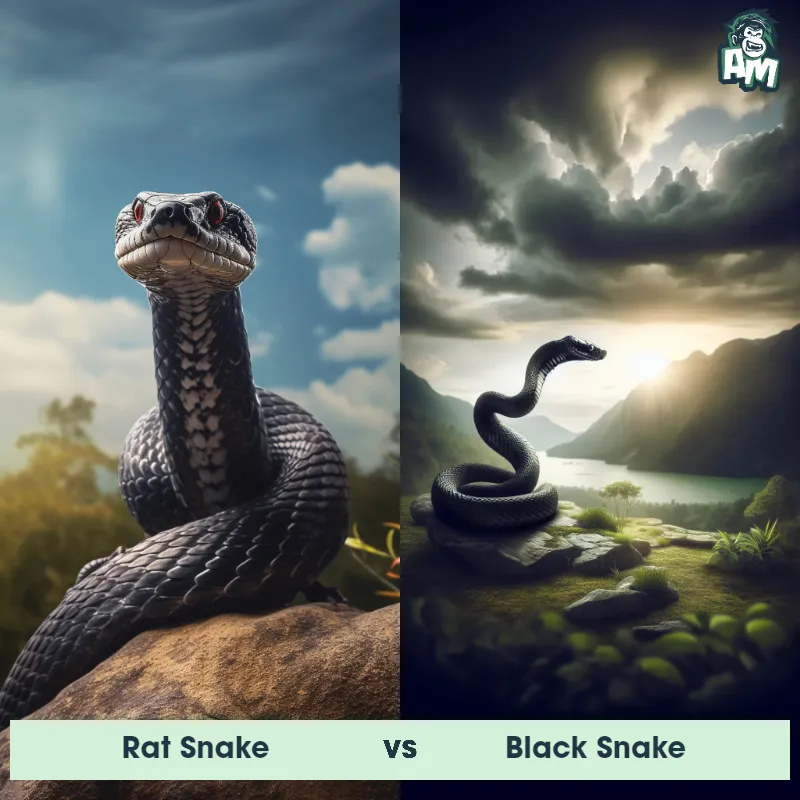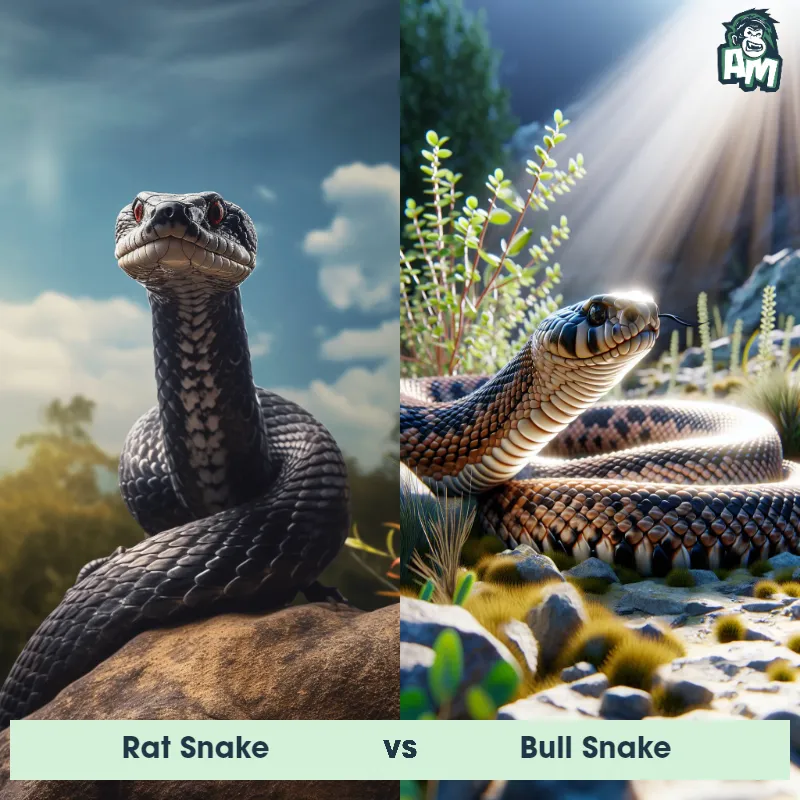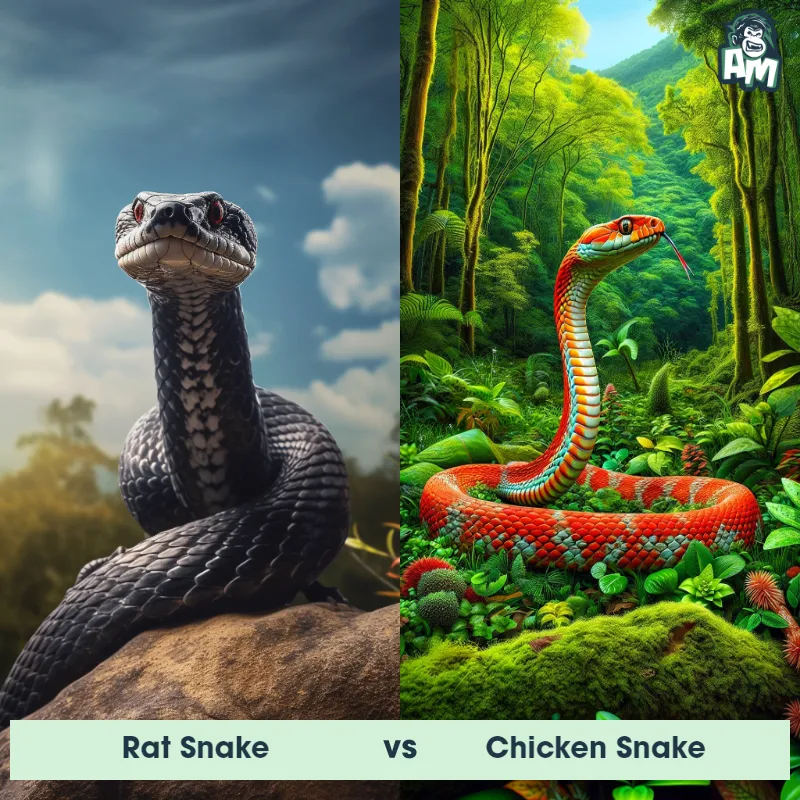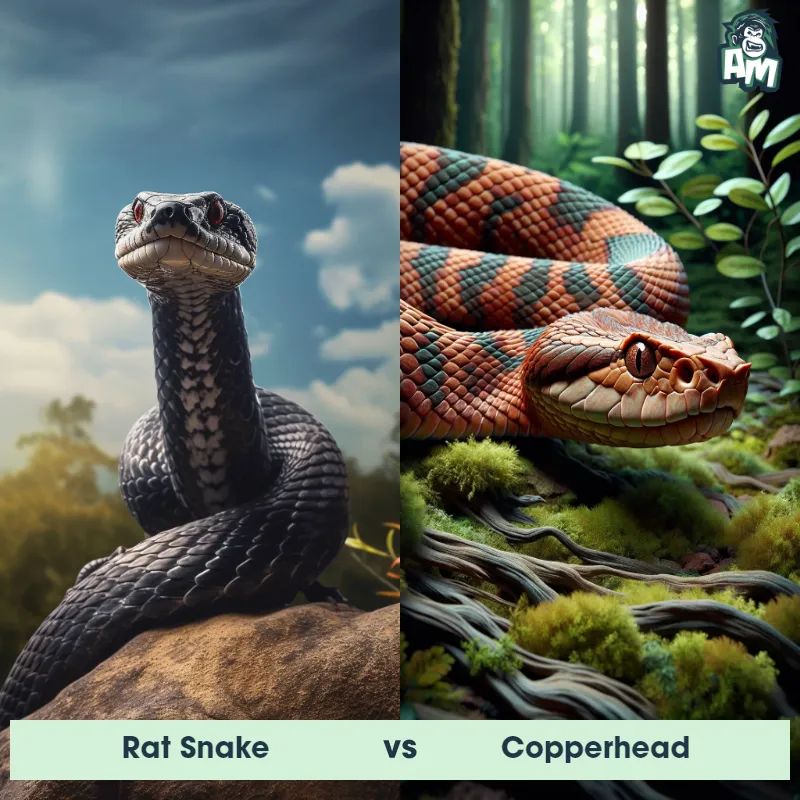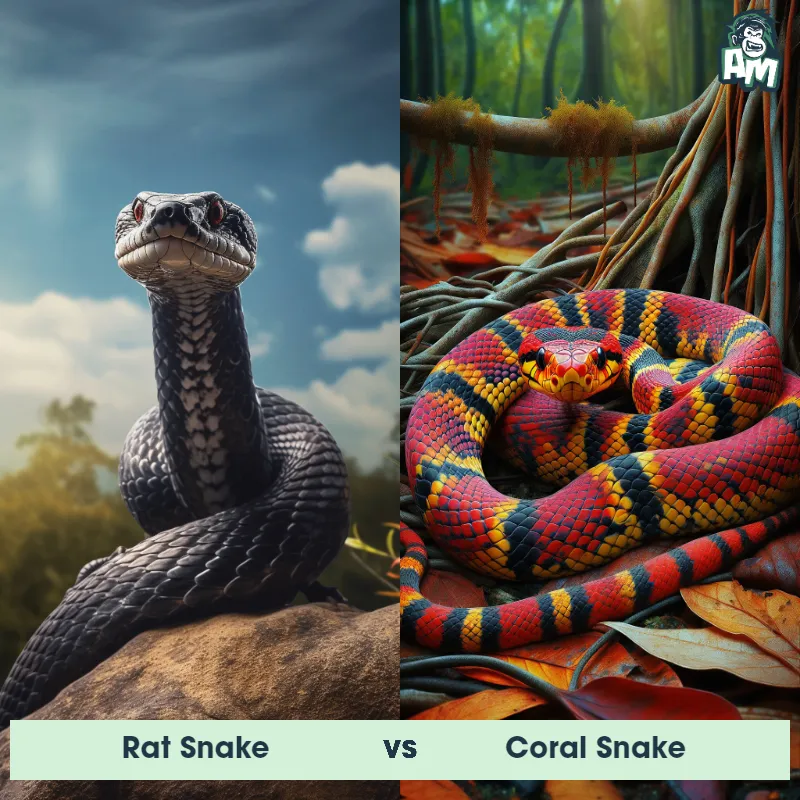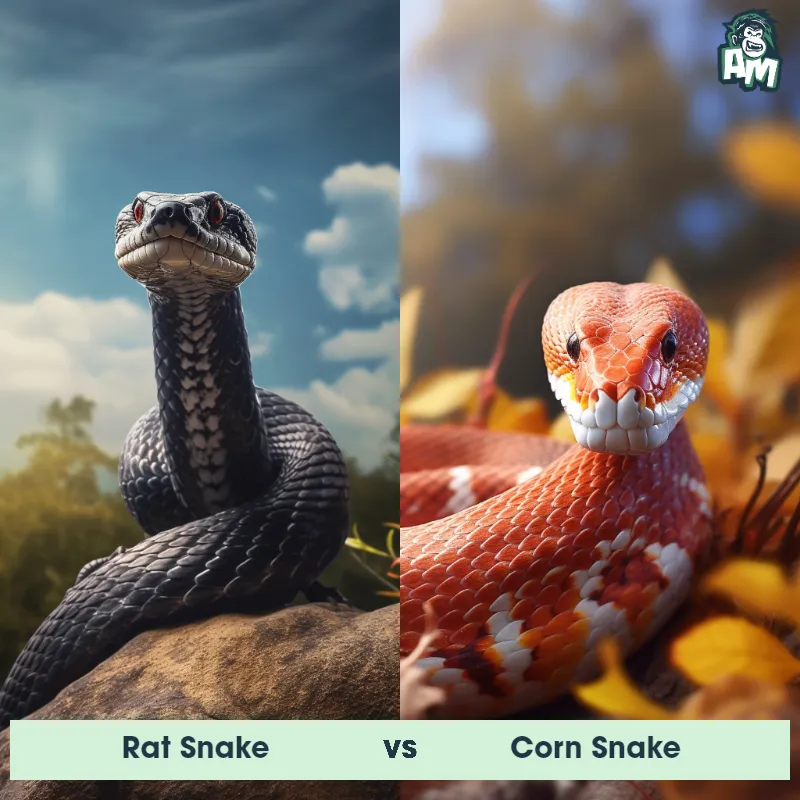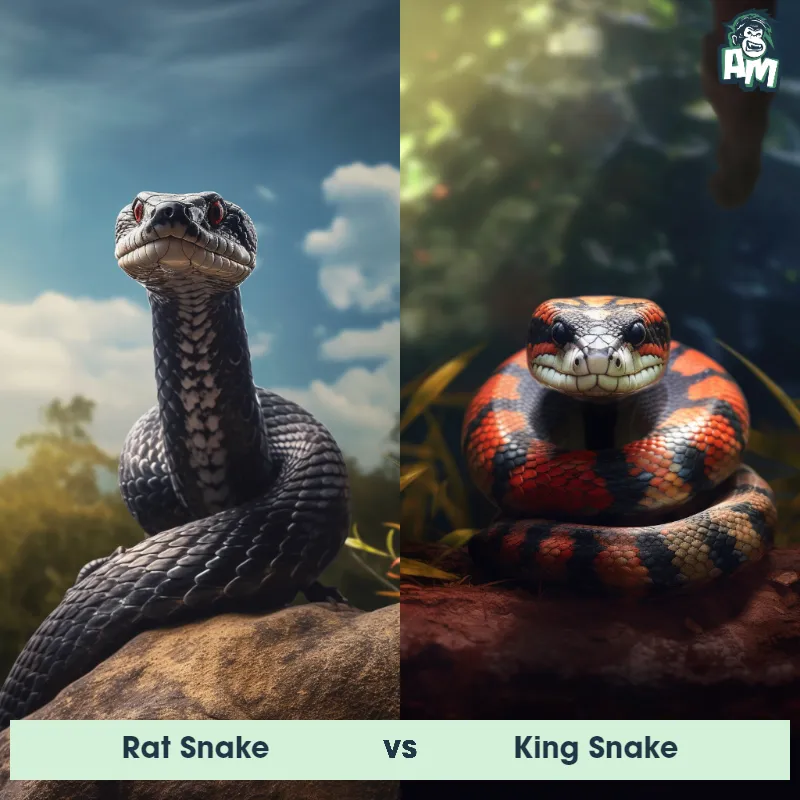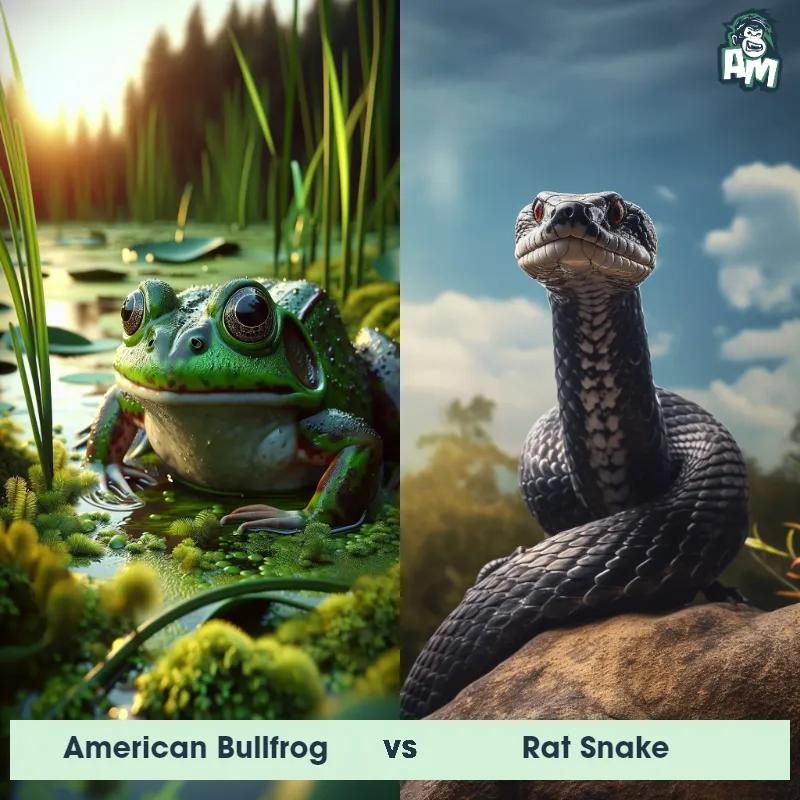The Rat Snake
The Rat Snake, commonly known as the Black Rat Snake, is a non-venomous reptile found predominantly in North America. Known for its striking glossy black scales, it can grow up to 6 feet in length. They have a slender body with a distinct tapering tail, which aids in climbing trees. They are excellent climbers and are often found near farmlands, forests, and rocky areas. Rat Snakes are constrictors, squeezing their prey to death before consuming them, and they are known for their ability to mimic rattlesnake behavior by vibrating their tails against dry leaves to deter predators.
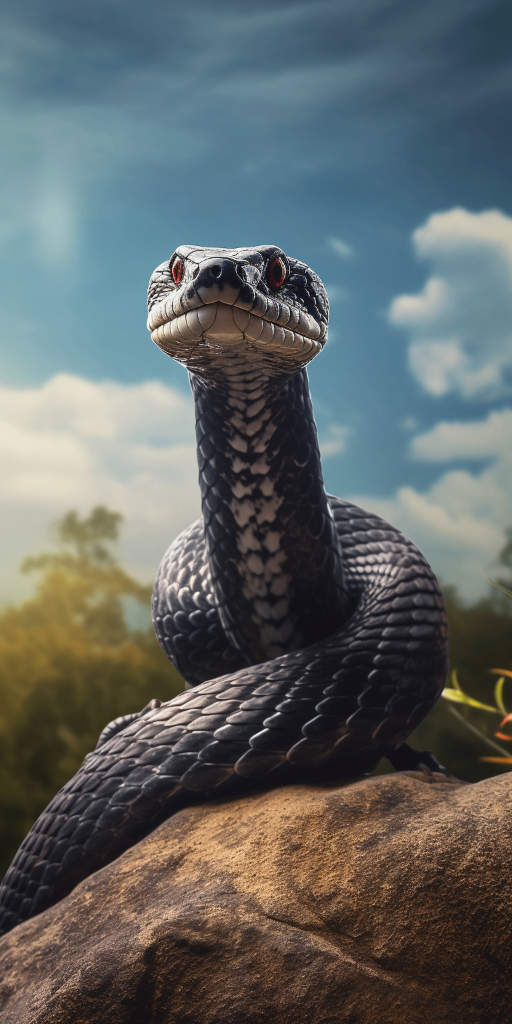
| Rat Snake | |
|---|---|
| Size | Up to 6 feet (1.8 meters) |
| Weight | Up to 2.5 pounds (1.1 kilograms) |
| Speed | Speed: 8 mph (12.87 km/hr) |
| Key Strength | Constricting ability |
| Biggest Weakness | Lack of venom |
| Scientific Name | Pantherophis guttatus |
| Family | Colubridae |
| Habitat | Forests, fields, and farmland |
| Geography | North America |
| Diet | Rodents, birds, and eggs |
| Lifespan | 8 years - 20 years |

The Rat Snake
The Rat Snake, commonly known as the Black Rat Snake, is a non-venomous reptile found predominantly in North America. Known for its striking glossy black scales, it can grow up to 6 feet in length. They have a slender body with a distinct tapering tail, which aids in climbing trees. They are excellent climbers and are often found near farmlands, forests, and rocky areas. Rat Snakes are constrictors, squeezing their prey to death before consuming them, and they are known for their ability to mimic rattlesnake behavior by vibrating their tails against dry leaves to deter predators.
Fun Fact: The Rat Snake has the ability to lower its body temperature and slow down its metabolism in cooler temperatures, which allows them to survive long periods of cold weather and hibernate during the winter months.
| Rat Snake | |
|---|---|
| Size | Up to 6 feet (1.8 meters) |
| Weight | Up to 2.5 pounds (1.1 kilograms) |
| Speed | Speed: 8 mph (12.87 km/hr) |
| Key Strength | Constricting ability |
| Biggest Weakness | Lack of venom |
| Scientific Name | Pantherophis guttatus |
| Family | Colubridae |
| Habitat | Forests, fields, and farmland |
| Geography | North America |
| Diet | Rodents, birds, and eggs |
| Lifespan | 8 years - 20 years |
Match Highlights
Rat Snake Matchups
We use AI to simulate matchups between the Rat Snake and other animals. Our simulation considers size, strength, and natural predatory behaviors to determine the most likely outcome.
Rat Snake: Diet, Predators, Aggression, and Defensive Behaviors
What do Rat Snakes eat?
Rat Snakes are non-venomous constrictors that primarily feed on rodents, birds, bird eggs, and sometimes small amphibians or insects. They are skilled hunters and use their keen sense of smell and excellent climbing abilities to locate and catch their prey.
Do Rat Snakes have any predators?
Although Rat Snakes are skilled at defending themselves, they do have predators in the wild. Some of their natural enemies include birds of prey, larger snakes, and mammals such as raccoons or foxes. Juvenile Rat Snakes are especially vulnerable to predation due to their smaller size.
Are Rat Snakes aggressive?
Rat Snakes are generally docile and not known to be aggressive towards humans. However, they may display defensive behavior if threatened, such as vibrating their tail, musking, or striking. These actions are usually a last resort and typically occur when the snake feels cornered or scared.
Do Rat Snakes fight with other snakes?
Rat Snakes are not known for actively seeking out confrontation with other snakes. However, they may engage in combat with rival males during mating season or when competing for territories. This combat usually involves intertwining and pushing against each other, rather than inflicting serious harm.
How do Rat Snakes defend themselves?
When faced with a threat, Rat Snakes have several defense mechanisms they can employ. One common tactic is to mimic the appearance of venomous snakes by flattening their head and hissing. They may also release a foul-smelling musk or strike with their mouth closed as a warning. If all else fails, Rat Snakes may resort to biting as a last-ditch effort to protect themselves.
What is the biggest weakness of Rat Snakes in a fight?
One of the biggest weaknesses of Rat Snakes in a fight is their lack of venom. While they can still deliver a painful bite, it is not lethal to humans. This means that in encounters with venomous predators or competitors, Rat Snakes may be at a disadvantage and have to rely more on non-venomous defense mechanisms such as striking or constriction.
Fun Fact: Rat Snakes have a high resistance to venomous snake bites due to a unique protein structure in their blood, making them highly resistant to the venom of rattlesnakes, copperheads, and other venomous snakes.
Fun Fact: The Rat Snake plays a beneficial role in controlling rodent populations, as they are known to feed on rats, mice, and other small mammals, which helps maintain a healthy balance in ecosystems and prevent agricultural damage caused by rodents.



